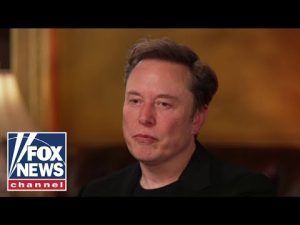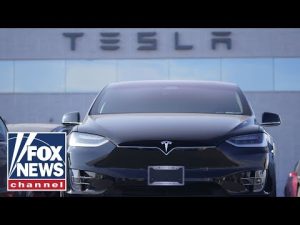In the world of economic headlines, one might assume a never-ending stream of doom and gloom. Yet, for those paying attention to the latest job reports, there’s an unexpected twist—a glimmer of hope. Recently released figures reveal a solid addition of 177,000 new jobs, coupled with a relatively low unemployment rate of 4.2%. Against the backdrop of trade wars and tariff talk, these numbers reflect a thriving American workforce. It seems these fears of economic collapse were, as usual, premature.
With more Americans working than ever before, the report offers a refreshing view of the labor market. An increase in participation and a welcomed reduction in government employment are setting the stage for a robust economic landscape. This development might mean that bureaucracy won’t continue to balloon unchecked. As more people find employment in the private sector, the less we’ll have to lean on government bloat, which should be music to taxpayers’ ears.
Stocks have also experienced an upward surge, demonstrating renewed optimism among investors. The doomsayers plastered worried headlines mere weeks ago, but their predictions seem to have been as unreliable as a weather forecast telling you there’s a zero percent chance of rain—only to have you caught in a sudden downpour without an umbrella. The market rebound indicates faith in a prosperous future, perhaps because of the Trump administration’s trade negotiations and deregulation efforts. However, should trade deals not materialize, it’s worth staying cautious as the stock market could once again find itself dancing along the edge.
Inflation, which has often been a sticking point in these discussions, presents a contrasting picture. While previous administrations sweat it out with soaring prices, Americans are now sighing with relief as inflation remains subdued. Some point fingers at tariffs, suggesting increased costs for Chinese imports like shoes and T-shirts. However, it’s the broader economic strategy, including increasing domestic energy production and rolling back regulations, that seems to be keeping the overall price tags in check. After all, if higher gas prices are a tax on the common man, then someone forgot to tell Trump—clearly, he didn’t get the memo.
Lastly, we hear whispers of potential progress on the notorious China trade front. Talks hint at addressing serious issues like the fentanyl epidemic, offering a fragile olive branch which, if materialized, could unleash a further economic boom. It seems logical that actions taken on this front would benefit the country, given past administrations’ apparent blind eye toward such concerns. With upcoming negotiations representing a turning point, the stage is set for either a breakthrough or another episode of economic theatrics. So, the future may be unpredictable, but these latest indicators are enough to warrant a cautiously optimistic outlook.







